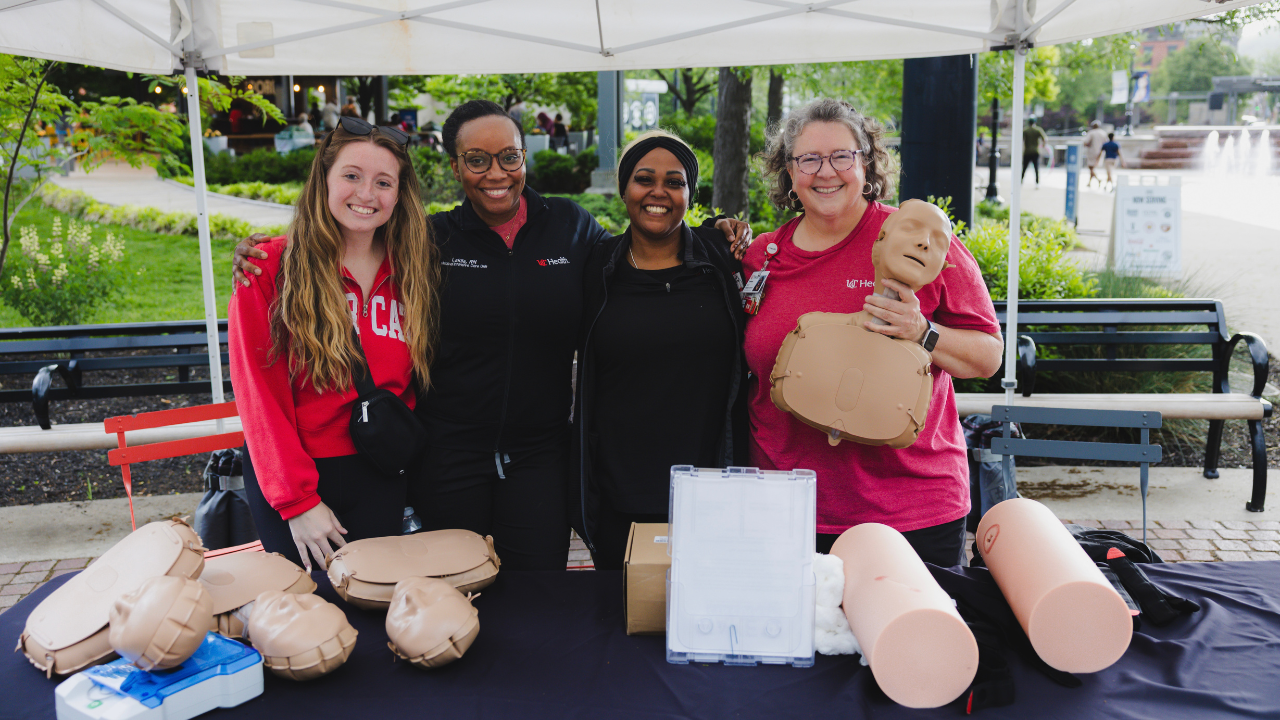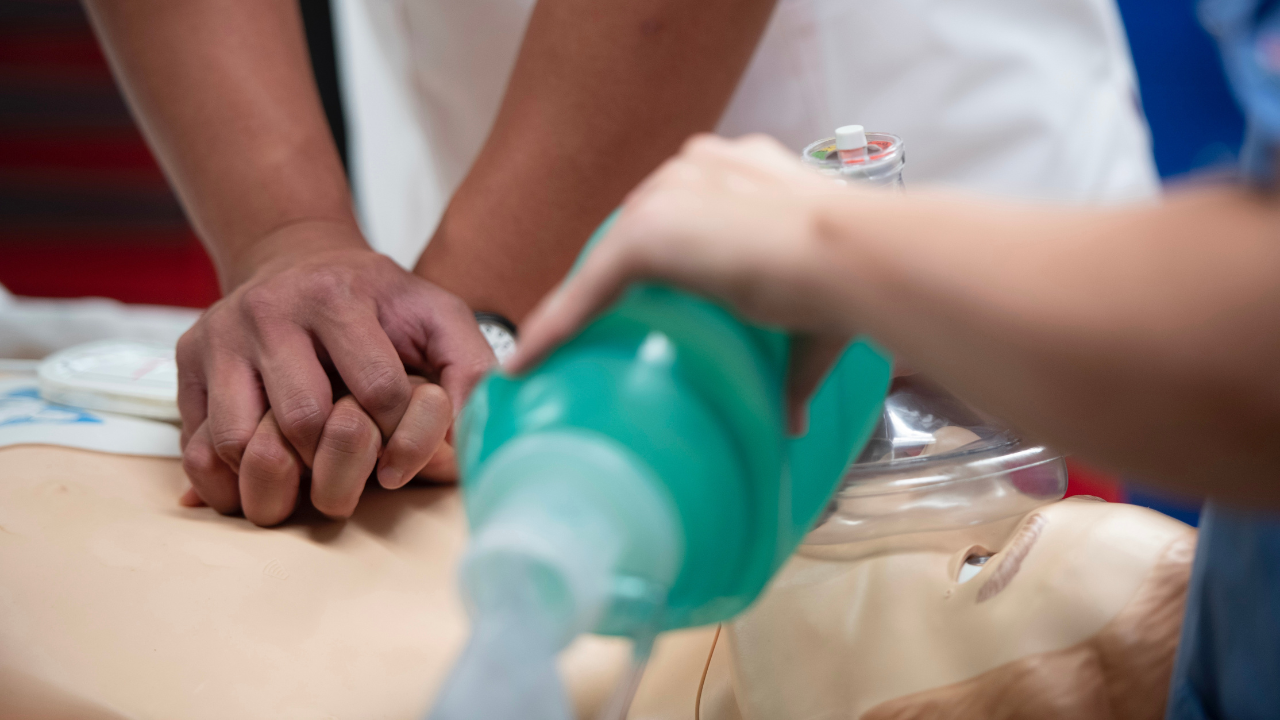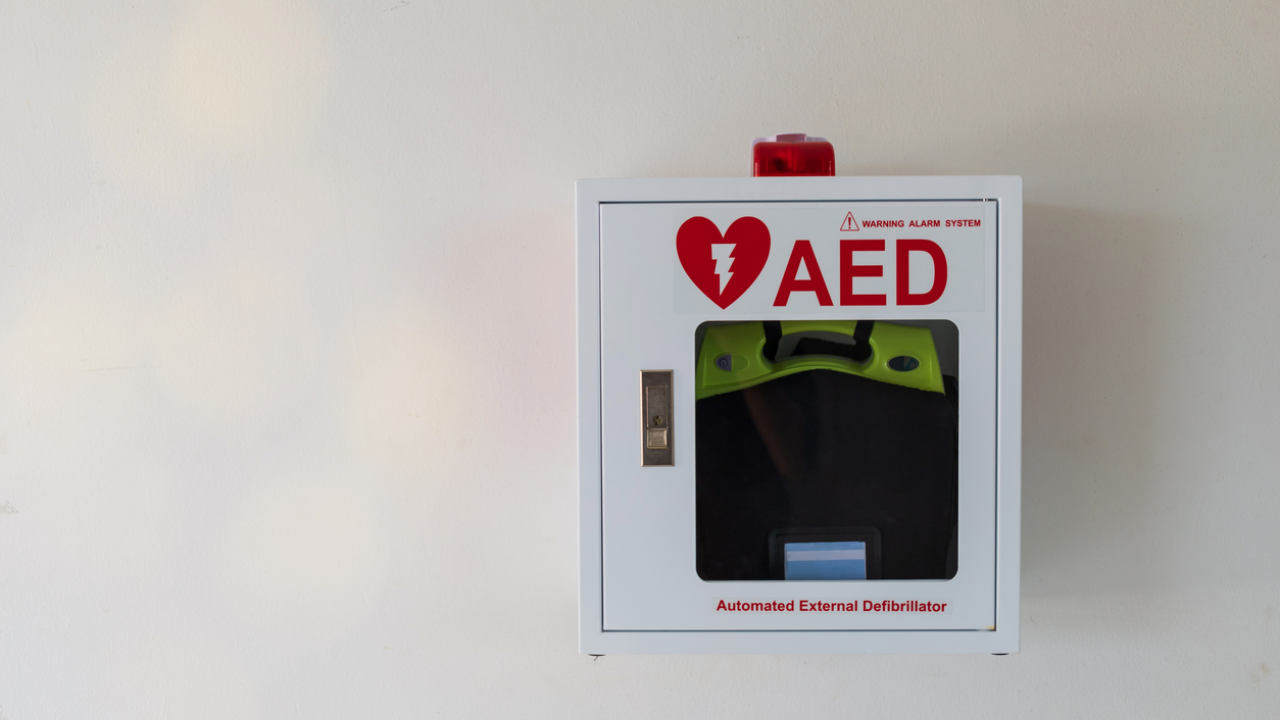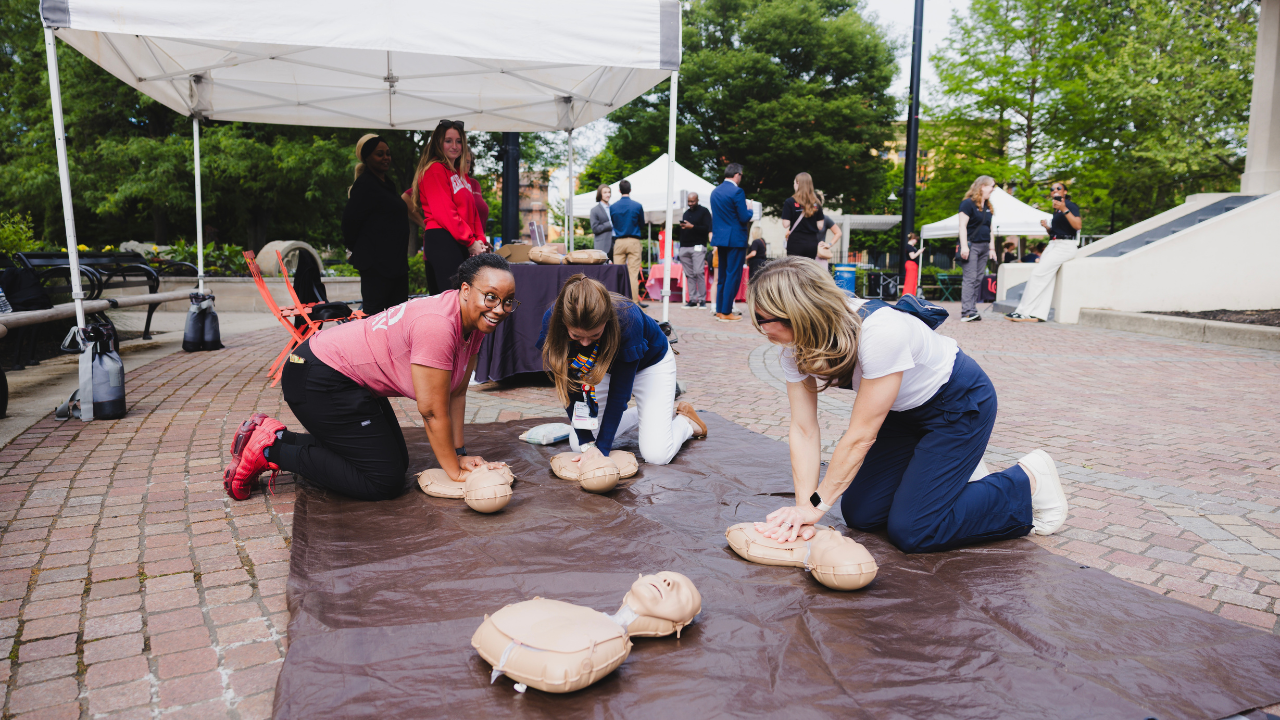Why is it important to use an AED and/or perform CPR?
UC Health makes it a priority to provide resources and training to improve pre-hospital care and to help the public prepare to take action in the event of a medical emergency, like a heart attack or sudden cardiac arrest. As the region’s only verified Level 1 trauma center for adults, we’re dedicated to ensuring that everyone in our community has access to the highest level of care—whether that’s inside or out of the hospital.
Without CPR, brain damage or death can occur in minutes. The average EMS response time is nine minutes, even in urban settings, and after 10 minutes, there is little chance of successful resuscitation. The American Heart Association estimates that effective bystander CPR can double or triple a person’s chance of survival.
AEDs are a critical part of responding to cardiac arrest. According to the American Heart Association, a person’s chance of surviving drops by seven to 10 percent every minute a normal heartbeat isn’t restored.
CPR combined with using an AED provides the best chance of saving a life. If possible, use an AED every time you perform CPR.
When should you perform CPR vs. use an AED? (Hint: you need both for cardiac arrest.)
You should use both CPR and an AED together when someone is in cardiac arrest. They work as a team, not as alternatives to each other. The key is recognizing when someone needs either intervention: if a person is unresponsive and not breathing normally (or not breathing at all), you start CPR immediately and get an AED as quickly as possible. Don't wait around trying to decide between which one to use.
Here's the typical sequence:
- Start CPR right away while someone else calls 911 and locates an AED.
- Once the AED arrives, attach the pads while continuing chest compressions until the device is ready to analyze.
- The AED will tell you whether a shock is needed. If it says, "shock advised," everyone steps back and you deliver the shock, then immediately resume CPR.
- If it says, "no shock advised," you skip the shock but keep doing CPR.
The AED is specifically designed to detect heart rhythms that can be "reset" with electricity, but even when it can't shock, the heart still needs CPR to circulate blood to vital organs.
How can the right beat help me perform CPR?
The key to performing CPR is to deliver chest compressions firmly and quickly. Think about the beat of some of your favorite songs. Some songs are slow, some are fast, some are in between.
Thinking of a song with a rhythm of 100 – 120 beats per minute helps you maintain the proper compression rate. One favorite from the UC Health CPR educators? “Stayin’ Alive” by the Bee Gees, it’s around 104 beats per minute.
What are some of the favorite songs of UC Health’s cardiovascular and emergency services teams for CPR?
If you’d like more ideas for songs that have the right beats per minute for CPR, the team of experts at UC Health likes the American Heart Association’s “Don’t Drop the Beat” playlist on Spotify.
With 195 songs spanning 12 hours, it’s a great list of diverse songs that get a seal of approval from our expert CPR educators. Some of the songs on the list include:
- “Poker Face” by Lady Gaga
- “Can’t Stop the Feeling” by Justin Timberlake
- “Call Me Maybe” by Carly Rae Jepson
- “I Wanna Dance With Somebody” by Whitney Houston
- “Billie Jean” by Michael Jackson
- “Eye of the Tiger” by Survivor
- “Country Girl: by Luke Bryan
- “Ring of Fire” by Johnny Cash
- “Take a Chance on Me” by ABBA
With songs that span decades and genres, consider saving the playlist and listening to it when you’re exercising, running errands or working around your home. You’ll familiarize yourself with the beat you may need to save someone’s life.



